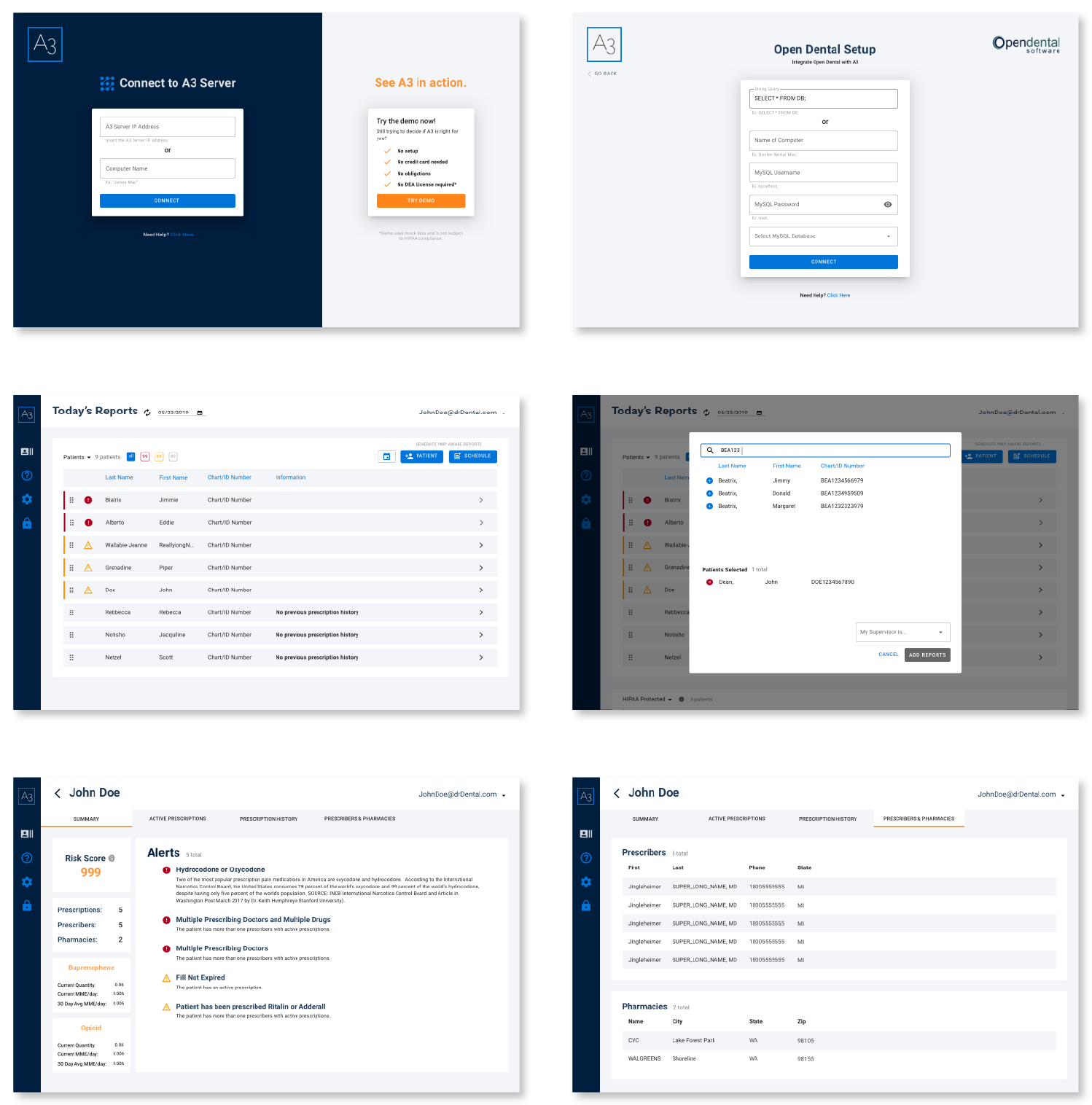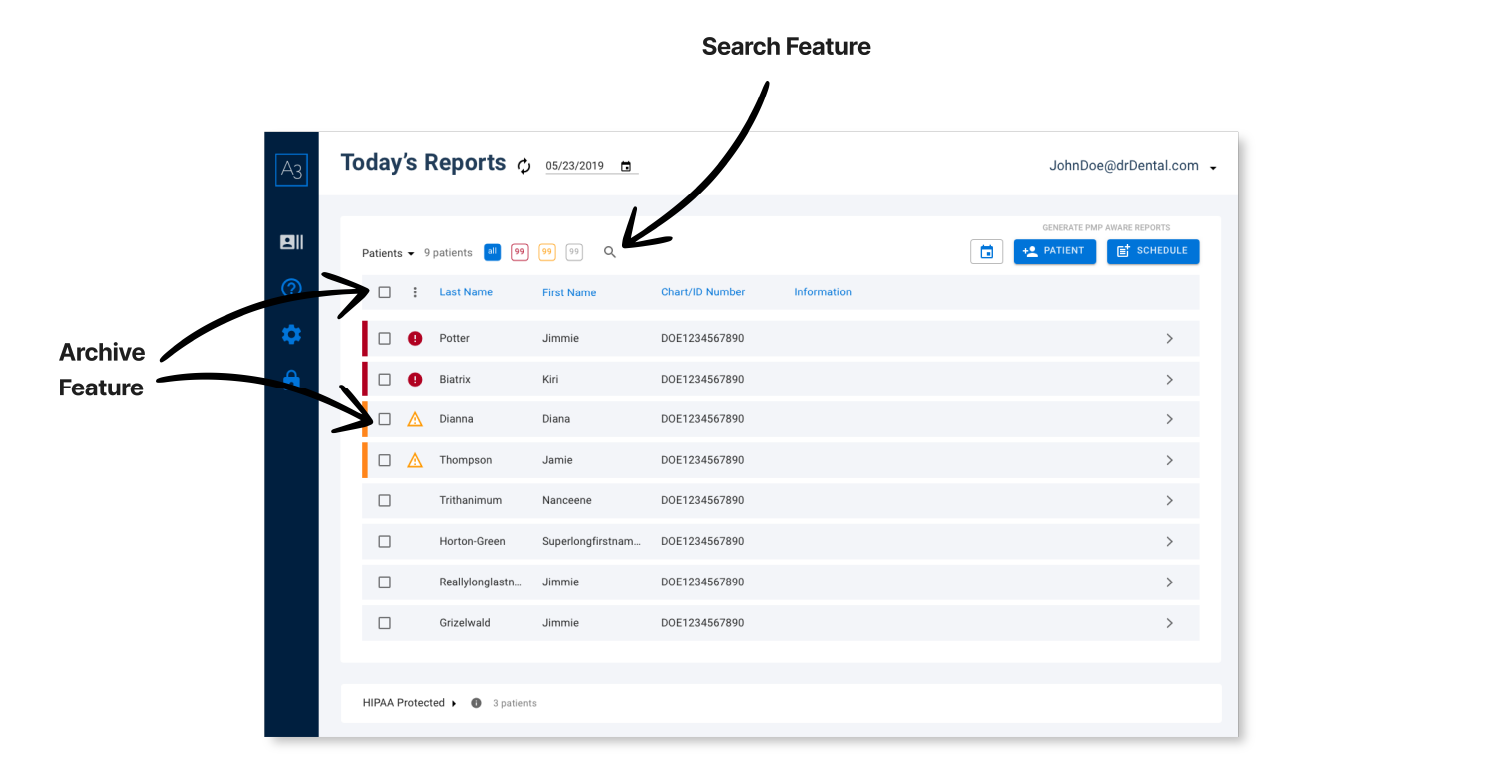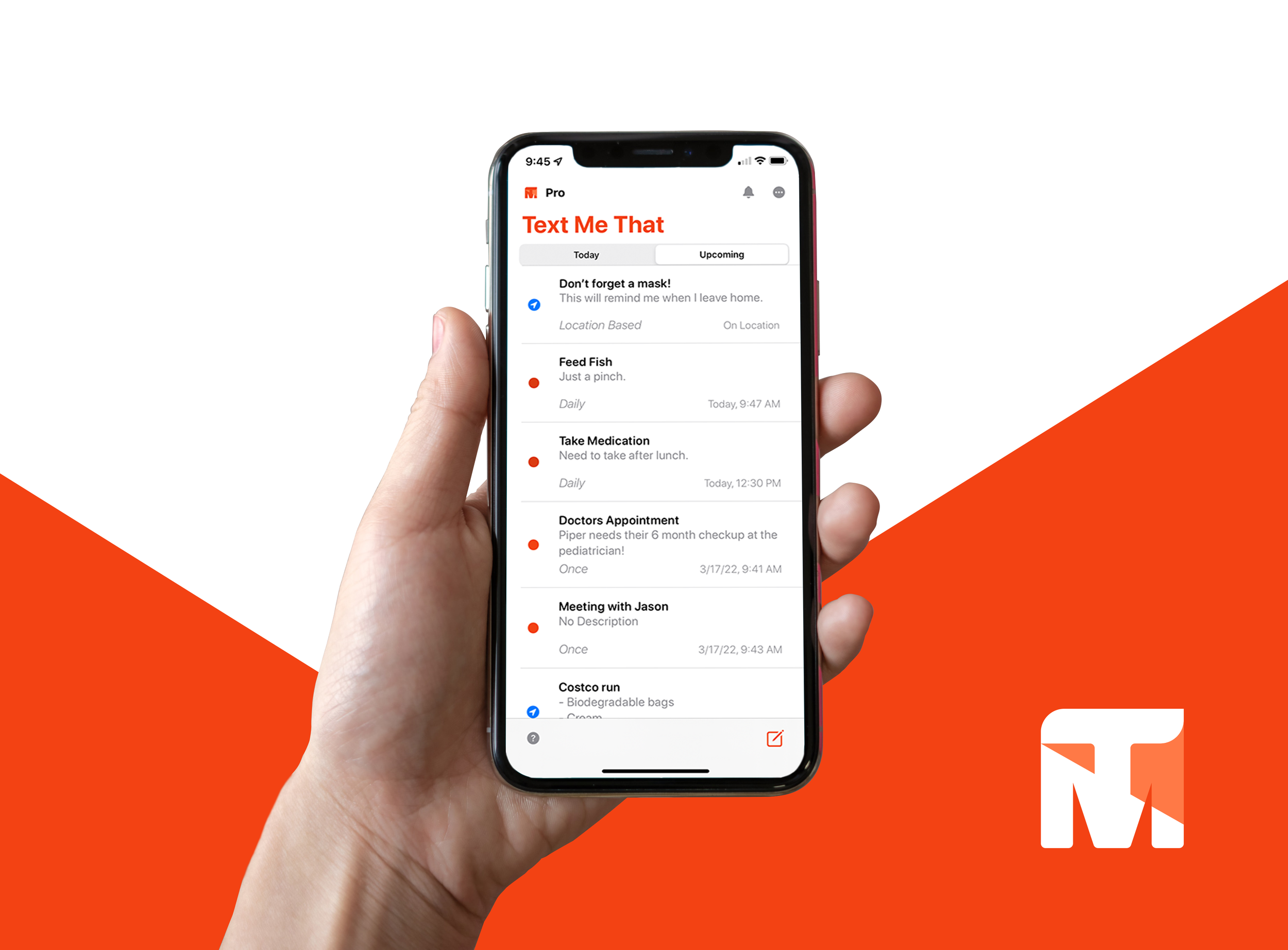A3 Medical Software
A desktop application that helps medical professionals stay compliant with state ran Prescription Monitoring Programs
Company Overview
Incept Medical is a tech startup located in Dallas, TX
My Role
Research, Wireframes, Prototypes, and User Interface.
Technologies
Sketch, Zeplin, React, Firebase, Illustrator, and Premier Pro
What is a Prescription Monitoring Program (PMP)?
A Prescription Monitoring Program (PMP) is a state-based electronic system designed to track the prescribing and dispensing of controlled substances. These programs aim to ensure legitimate medical use of these substances while helping to prevent misuse, abuse, and diversion. Essentially, healthcare providers are required to check a patient’s prescribing history before issuing prescriptions for controlled medications.
While PMPs play a critical role in improving patient safety, they are often plagued by issues like slow query times, system lag, and clunky interfaces. In a self-conducted study, querying a single patient’s history could take up to 6 minutes. Additionally, these systems are typically only accessible by medical professionals with a DEA number (e.g., doctors).
What is A3?
A3 is a solution designed to streamline and enhance compliance with Prescription Monitoring Programs (PMPs). It automates the process of loading and retrieving reports, ensuring that all necessary data is available before the workday even begins. This significantly reduces the time spent on manual checks.
For instances where a manual search is required, A3 delivers reports in under 7 seconds, providing a comprehensive patient history, risk analysis, and any potential prescription conflicts. This makes it a far more efficient and user-friendly tool for medical practices.
The Goal
The goal of this project was to design and develop a clean, user-friendly dashboard that minimizes the noise and clutter typical of state-run medical documents. Key features include easily identifiable risk scores, drug interactions, potential drug abuse risks, and details of any open prescription orders.
Given the broad scope of the medical industry, our team chose to focus specifically on the dental sector in Texas, tailoring the dashboard to meet the unique needs and challenges faced by dental professionals in this region.
Spoilers!
I have prepared a final prototype for this project if you would like to skip ahead and view it now. A link will also be available at the end of this case study.
1. Research
Being in how this software will be used by medical professionals, affects patients' lives, and deals with the legalities of the medical system, it was paramount that my understanding of this project need be on point. I decided it'd be helpful to conduct interviews with professionals who work directly with these programs to collect a subset of data that would give me deeper insights into the current state of PMPs and get to the root of the problem I was trying to solve.
Understand how medical professionals are using the current systems in order to be PMP compliant.
Discover any pain points of the current system and how they affect medical professionals' daily routines.
Doctors
WEAK REWRITE: To better understand and create my user personas, I conducted initial individual user interviews over video chat with two General Dentists (D.D.S.) to better understand what they really wanted, and why. I chose a series of 5 questions.
Generally, how many patients do you see in a given day?
What are your current processes for staying PMP Compliant?
Would you describe these processes as efficient or inefficient? Why?
What are your feelings towards the risks you are required to take to stay compliant?
Are you currently using software to assist you in your practice?
Drug Enforcement Agent
Next, I really wanted to understand the reasoning behind these laws and why they were created in the first place. I conducted an interview with a DEA who worked in Dallas Texas and chose a series of 5 questions as well. He was unavailable to do a call at the time, but emails were swapped and I felt like I understood the core concepts.
How would you explain what a PMP does for your job?
What do you think the reason is that it’s a law?
In your opinion, is PMP a good thing or a bad thing? Why?
Are PMP laws effectively doing what they were designed to do?
Have you seen any recognizable change since it came into law?
2. Define
Prior research confirmed there was a clear demand for a better system that would improve the speed, simplicity, and reliability of current PMP compliance. Now it was time for me to plan what that experience would look like. My goals for defining the product were to:
1. Determine exactly who I'll be designing for
2. Clarify a structure for the way content will be presented
3. Organize a list of features to build based on prior research
4. Visualize potential design solutions and prioritize flows
User Persona
I started by creating a persona. Personas help us model the users’ personalities, behaviors, pains & needed gains, which helps us better ideate the right features and set its priorities later on. Essentially they will be used as reminders of who I'm designing for throughout the remainder of the design process. Elise is an example of a likely “average” user, who is attempting to find a way to clear up time in her busy workday. I chose her as the primary persona because she represented the high-priority product opportunity that presented a good starting point for building out our MVP.
Visualizing the As-Is Journey
Currently, the journey of retrieving patient reports is difficult and time-consuming which helps us identify categories of our user journey.
Visualizing the To-Be Journey
Our team then used these insights and design statements to visualize how the experience for Elise could improve once she started using our software. From frustration, anxiety, confusion, and stress her experience transforms into one that anticipates her needs and desires by reducing her workload.
Feature prioritization
I referenced all of the previous research to compile a list of high-priority features that were critical to the success of my goal to offer a simple, clean, easy-to-use medical software. The initial features I would be building out were:
Low friction onboarding flow
Low friction onboarding of database integration for three separate companies
Add all patient reports from a selected date
Add an individual patient report based on specific patient data
Create a risk assessment scoring system to be used by prescribers
Have the option for a detailed report that contains a detailed Summary, Active Prescriptions, History, and Pharmacies.
Divining the Path
After interviews and general research had been finished, personas in hand, MVP features locked, I further empathized with the users to understand the decisions faced and to optimize tasks by creating a site map. This aligned everyone’s expectations and ensured we did not venture off the course.
Shaping the Pages
Once the features were planned and mapped, it was time to start chiseling out the structure of how data will be presented. To start, I quickly sketched some potential table-based layouts for the dashboard. After feeling fairly satisfied with my sketches I wanted to visualize things a bit more precisely so I started putting together some wireframes. We decided to go with a fairly simple series of columns and rows instead of using cards because it was more easily scannable to the human eye.
3. Design
With a solid foundation in place and lots of data, I began the design process. My goals were to:
1. Ensure A3 was in-line with Incept Medicals brand identity
2. Design the A3 logo
3. Plan the start of a scalable design system for Incept Medical
4. Design an end-to-end desktop application
Brand Kit
Color branding had already been decided upon by the time I joined the team, but I still explored styles with the existing wireframes and began building the A3 design system which evolved as I continued to jam out the design bits throughout the lifecycle of this project.
End-to-End Desktop Application
The design continued to evolve and the UI of the A3 experience came to life. As promised, here is another link to the finished prototype.
4. Usability Testing
With my shiny new prototype functioning and the UI looking pretty, it was time to start putting it in the hands of users and get real feedback.
Testing Plan
REWRITE THIS ONE: Finding adequate users to test our software was incredibly challenging due to their job requirements. We could not find just anyone to test the program to give meaningful data with our patient reports. The ideal candidate would:
Be a medical practitioner
Be in a position that prescribes medicines
Work in a medium to a high volume environment
Ideally, someone who has experience with high-risk patients
Scenarios will include missions like adding a patient, pulling previous patient reports, initial reactions to our risk score analysis, etc. Testing will be done remotely via a link while they screen share.
Findings
After giving the product to the users, we discovered a few areas that needed to be improved upon.
Confusion with the risk score system - What is good vs. what is bad?
No way to mark a patient as completed
Wished for search functionality on reports
Updates
With a new mission in place, I hit the drawing board and made these adjustments to my prototype.
Next Steps
Now that the app is proven to be functional and an MVP is designed, A3 should be tested in different locations with a key focus on expanding the user base outside of just dental practitioners. Due to the legalities of patient confidentiality, future testing will likely have to be through questionnaires and guerilla-style interviews with existing customers. I would imagine giving free software - or steeply discounted, with in-depth interviews as an exchange would be a great way to get valuable data. At any rate, now that Incept Medical has a validated design to expand upon, they can focus efforts on developing more connections and expanding their user base.
Lessons Learned
Incept Medical was my very first UX contract. Before this project, I was focused on software development and graphic design, so this seemed the logical next step. I taught myself everything I could while also trying to establish what this position even meant in the company - UX is still a fairly newly defined position and this was not an exception at Incept Medical. With the next project, I will spend more time focused on wireframing and showing my clients their value. Early on in this project, I set up an initial meeting to go over my wireframes with my team leads however they were expecting something more polished so the tone of the meeting immediately got off on the wrong foot - setting the right expectations is something I ended up learning the hard way. Since this project, I discovered the value of third-party testing sites such as Maze and Usertesting.com. I have utilized these resources in future projects and have found them to be money well spent. Overall, I learned a lot about empathy, communication, laws, and teamwork while sharpening my UX toolkit in the process.














